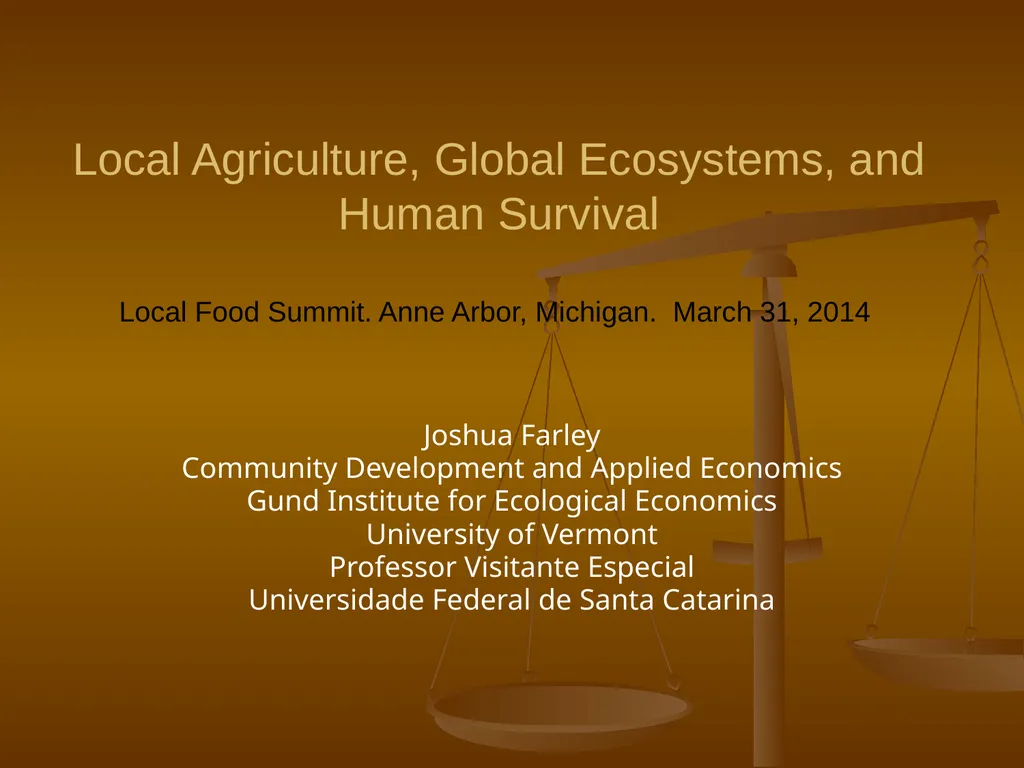
Local Agriculture, Global Ecosystems, and Human
Author: lindy-dunigan | Published: 2025-05-28
Description: Local Agriculture, Global Ecosystems, and Human Survival Local Food Summit. Anne Arbor, Michigan. March 31, 2014 Joshua Farley Community Development and Applied Economics Gund Institute for Ecological Economics University of Vermont
Download Presentation
Download the PPT/PDF: Download
Transcript:
Loading transcript…